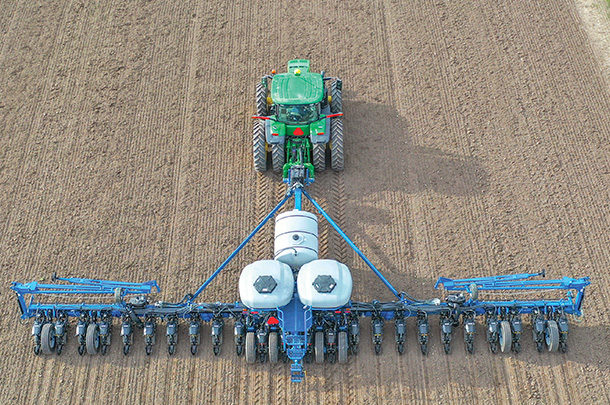With the approach of spring weather, farmers are busy preparing for planting season. But many are looking even further ahead, thinking about and placing orders for new planters for 2023. That’s due to continuing supply chain issues, which have challenged the farm equipment industry – and many other sectors of the economy – over the past year. Shortages of critical parts have delayed production for all types of farm equipment.
This has resulted in lower inventories for many dealers across the industry who are trying to keep up with strong farmer demand, fueled by the improved farm economy and low interest rates. As a result, many farmers are now making planter buying decisions for next year even before they put seed in the ground for 2022.
With longer lead times, producers have the opportunity to evaluate what type of planter is the best fit for their operation for the years ahead. For some, this may simply involve replacing a current, outdated planter with a newer, more efficient model. Others may opt for a larger, more versatile planter with more technology features that address the need for increased productivity due to farm expansion, higher yields or other changes in their operations.
At the top end of the technology spectrum are high-tech, high-speed planters that enable farmers to cover more acres in a typical day. Equipped with the latest planter controls and other features, they offer higher efficiency without the need to change a lot of equipment on the farm, such as purchasing a new corn head or different spraying equipment.
High-speed planters (and the advanced planter controls they typically include) enable producers to get crops into the ground sooner, which is a valuable hedge against wet or cold spring weather that can shorten the planting window. Additionally, these advanced machines can provide a solution for operations trying to expand by enabling producers to plant more acres with the same size planter.
Speed, however, is not the sole consideration. For some operations that are reluctant to make a big jump into new tech, an alternative can be to upgrade their existing planters with new technology systems.
There are also new, lower-tech planters that come standard with popular tech features and the ability to add additional systems that make sense for the operation. Farmers will still be able to get seed into the ground in a timely manner but for a lower capital outlay than that for a high-speed model.
Examples include hydraulic downforce that provides accurate and consistent planting depth; electric clutches that turn planter sections on and off, row by row; and switching from ground to hydraulic drive to support variable rate planting. Other options include more economical seed meter choices, new closing wheels, tillage attachments and a new fertilizer system. These and other tech additions add flexibility, efficiency and ease of use.
Lower-tech planters can still provide what farmers are used to operating, and they require the same basic maintenance. And little, if any, retraining is needed for farm workers who operate the machines.
Planter maintenance
In addition to planning for future needs, it’s important to focus on planter maintenance to ensure that equipment is field ready this spring. Examples include:
- Maintaining seed meters to make sure they will properly singulate seed and deliver consistent spacing between seeds for optimal emergence. Both mechanical and vacuum seed meters should be removed from the planter and cleaned out when not in use.
- Inspecting the seed discs, singulator brush, crowder brush, wall brush and air inlet screens. Identify common wear points and clean or replace parts as needed. For optimal performance, consider taking them to a certified dealer for seed meter testing.
- Thoroughly inspecting for any loose hardware, especially parallel arm bolts, transport and field wheel bolts, and center post bearing casting bolts (on pivot fold planters).
- Checking that all technology systems are operating properly. For example, turn on the planter display to check power connections, relays and GPS operation, and that the display is correctly registering all modules.
Look online for more tips on planter maintenance (Equipment Hub: Don't overlook electronics).
Having the right planter for your operation and consistently providing required maintenance will go a long way toward getting the growing season off to successful start.
PHOTO: Seed planters now offer more capacity and accuracy without sacrificing flexibility – but maintenance is key. Photo courtesy of Kinze Manufacturing.
Brad Niensteadt is a senior product specialist with Kinze Manufacturing












